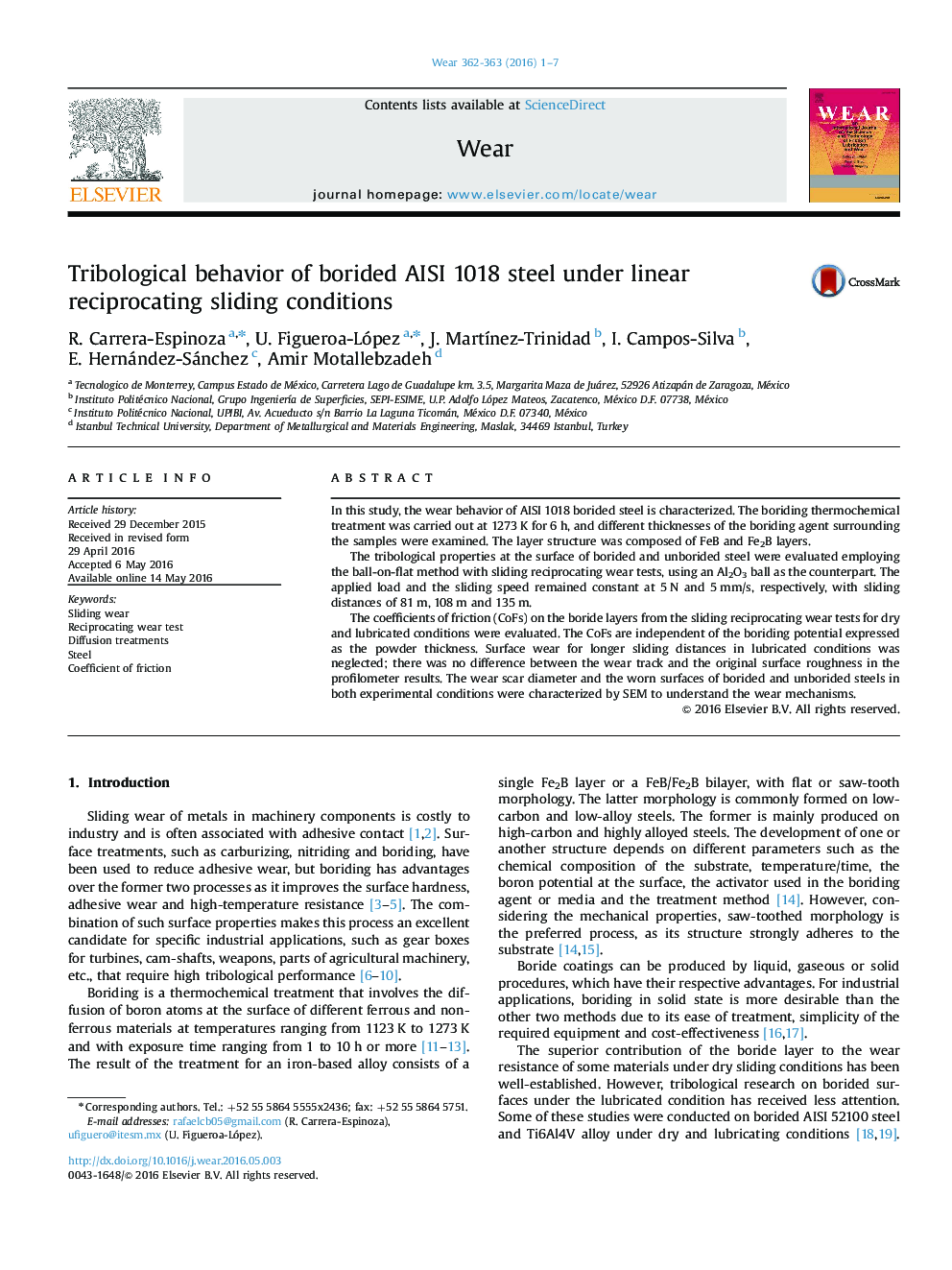| کد مقاله | کد نشریه | سال انتشار | مقاله انگلیسی | نسخه تمام متن |
|---|---|---|---|---|
| 616849 | 1454960 | 2016 | 7 صفحه PDF | دانلود رایگان |
• Sliding lubricated promotes the polishing and slight plowing wear mechanisms.
• The loss of material of the borided sample with sliding lubricated was negligible.
• Decreasing friction coefficient will inhibit main wear mechanisms with lubricant.
• The friction coefficient is unexpected higher in dry conditions for this tribo-pairs.
In this study, the wear behavior of AISI 1018 borided steel is characterized. The boriding thermochemical treatment was carried out at 1273 K for 6 h, and different thicknesses of the boriding agent surrounding the samples were examined. The layer structure was composed of FeB and Fe2B layers.The tribological properties at the surface of borided and unborided steel were evaluated employing the ball-on-flat method with sliding reciprocating wear tests, using an Al2O3 ball as the counterpart. The applied load and the sliding speed remained constant at 5 N and 5 mm/s, respectively, with sliding distances of 81 m, 108 m and 135 m.The coefficients of friction (CoFs) on the boride layers from the sliding reciprocating wear tests for dry and lubricated conditions were evaluated. The CoFs are independent of the boriding potential expressed as the powder thickness. Surface wear for longer sliding distances in lubricated conditions was neglected; there was no difference between the wear track and the original surface roughness in the profilometer results. The wear scar diameter and the worn surfaces of borided and unborided steels in both experimental conditions were characterized by SEM to understand the wear mechanisms.
Journal: Wear - Volumes 362–363, 15 September 2016, Pages 1–7
